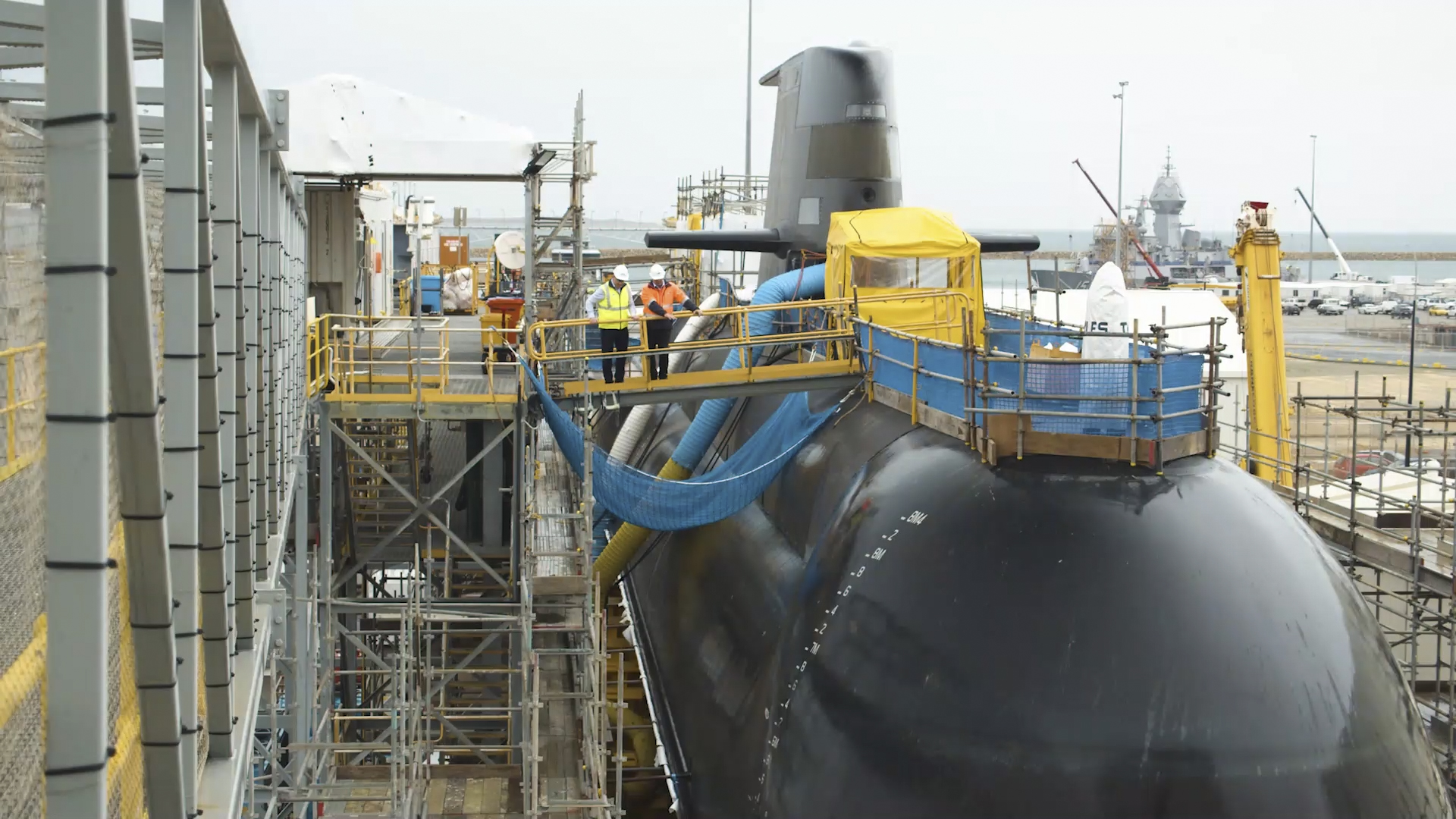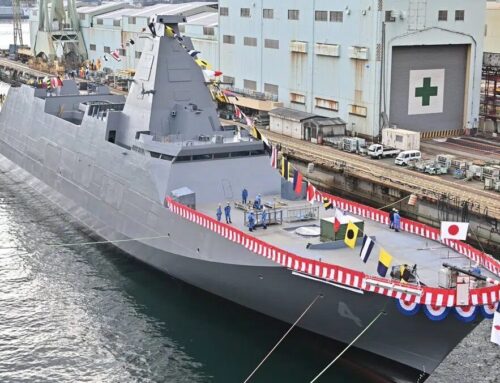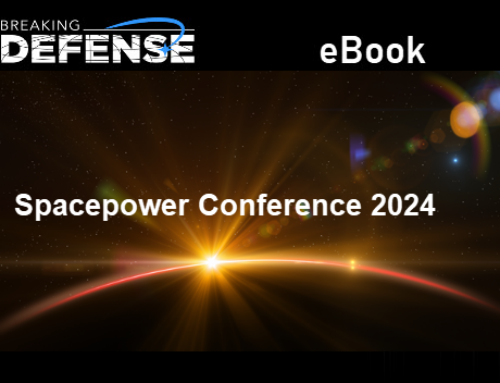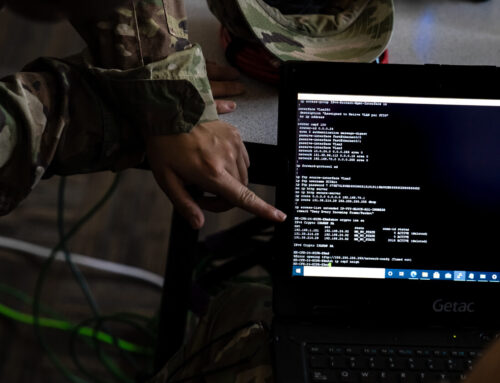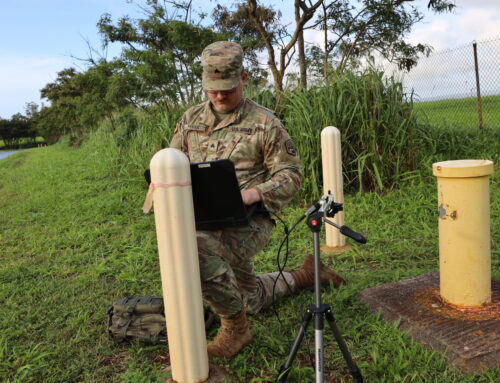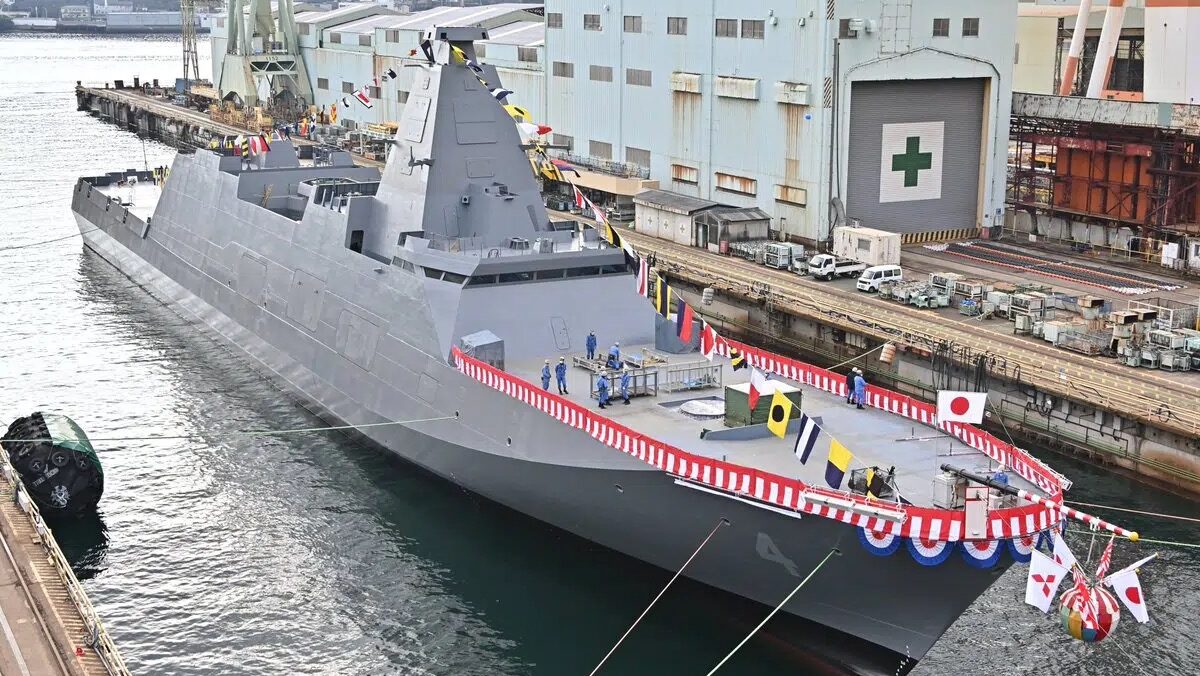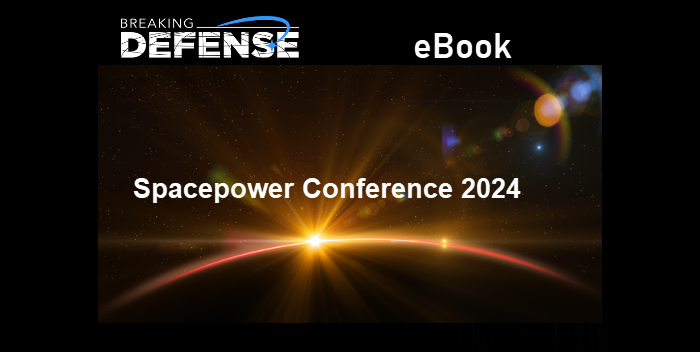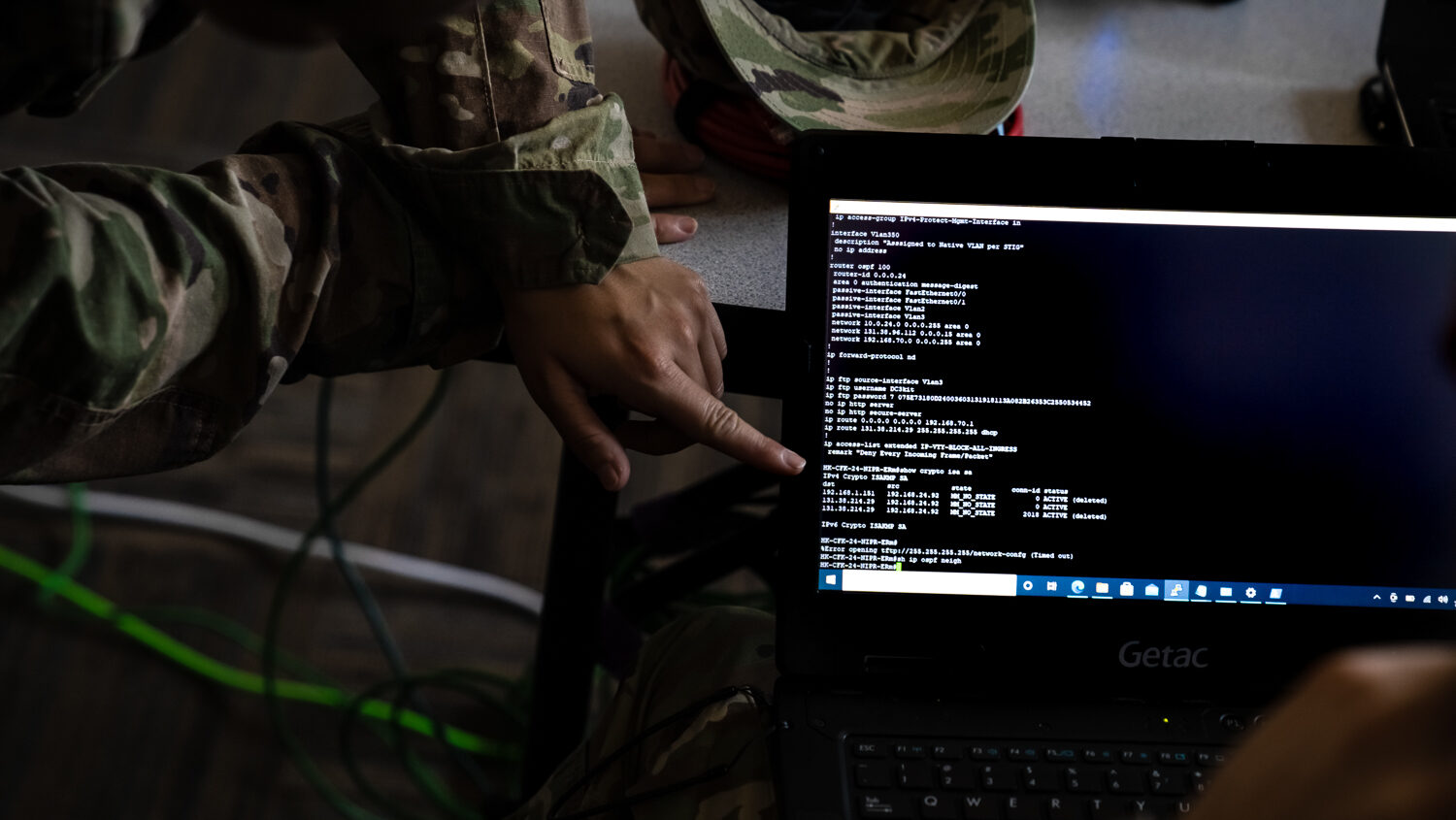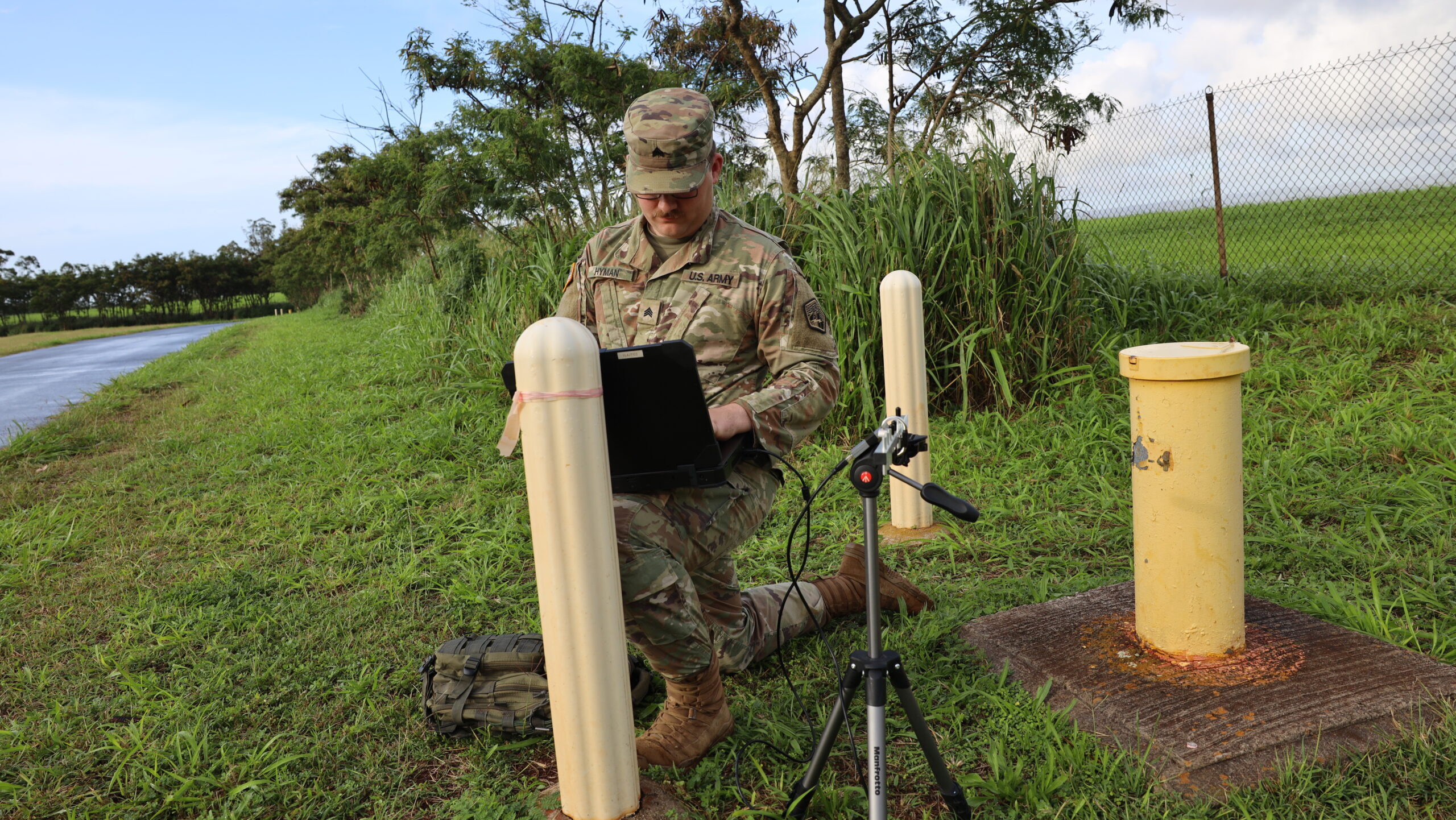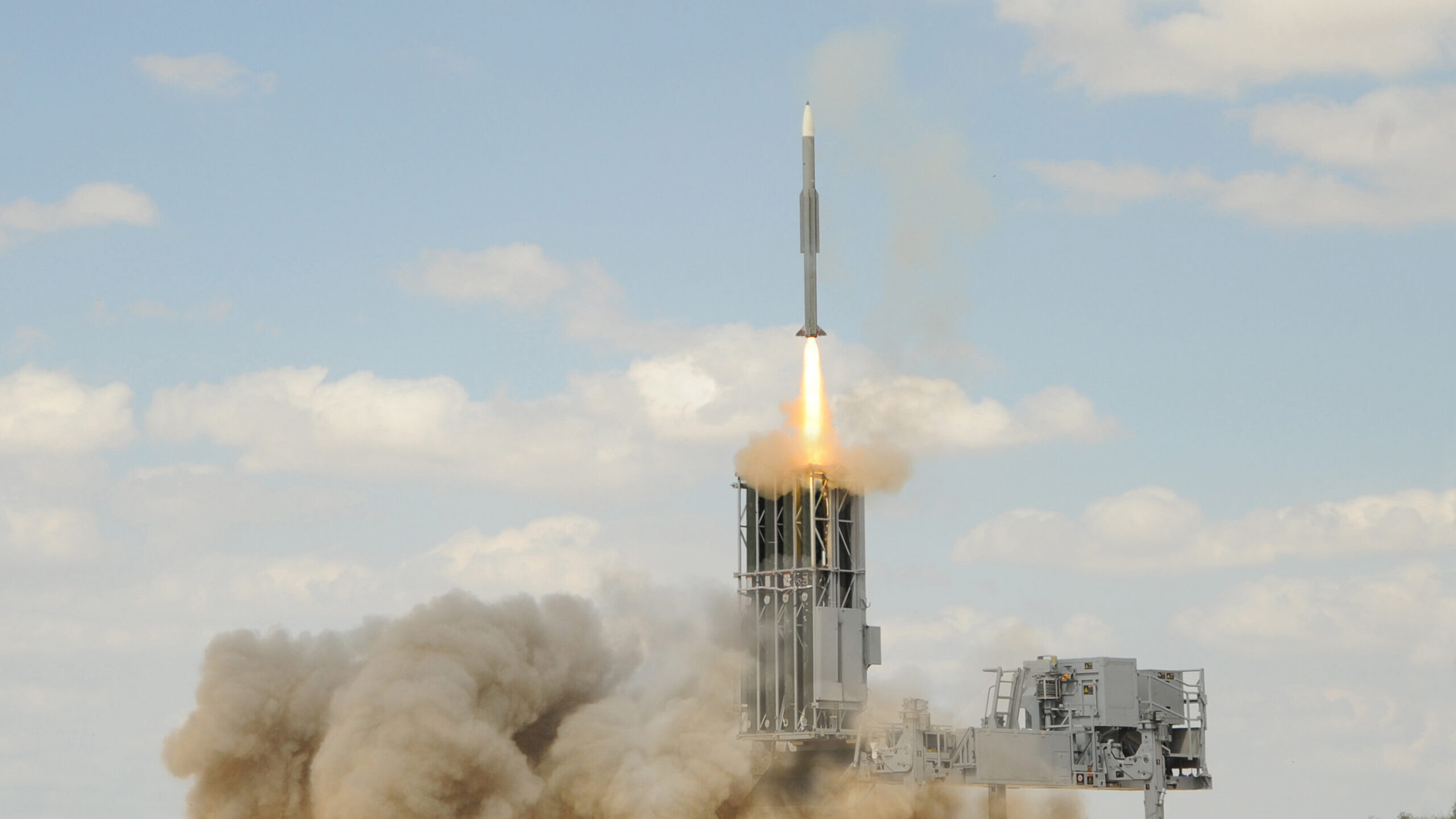A Collins Class submarine at Henderson Marine Complex, Western Australia. Credit Australian DoD
SYDNEY — Five of Australia’s six aging Collins-class submarines are undergoing repairs or are awaiting upgrades, according to a new report here, leaving only one fully operational boat to prowl the Pacific. It’s a development that could hobble Canberra’s ability to project power in the region and one that analysts said was “alarming” if not predictable.
The Australian Broadcasting Corporation broke the story today, quoting “defense sources” who said that two of the Collins boats are currently in Adelaide’s Osborne shipyard. Workers there are striking, which is reportedly also causing delays to the in-depth maintenance underway. Unexpected levels of corrosion are reportedly slowing work as well. The three other boats are at HMAS Stirling’s Garden Island naval base in Western Australia
The Defense Ministry issued a statement to the ABC that it has “more than one boat available” for operations “if required.” The statement said that the Collins boats “meet government-directed levels of operational availability.” The ministry did not immediately respond to Breaking Defense’s request for comment.
Analysts expressed concern about the news, noting successive Australian governments have deferred and delayed making decisions about what was to replace the Collins class and how they should be maintained and upgraded.
The Collins-class subs are being upgraded to extend their projected lifespans. The “Life-of-Type Extension” (LOTE) was announced in June. Australia had already scaled back earlier planned upgrades to optronics for the Collins. Optronics refers to a visual sensor technology widely used on submarines. The boats will also not receive the Tomahawk cruise missile.
The new report is “pretty alarming news, especially since these boats have to operate through to the 2040s (alongside the Virginia class SSNs) and much was riding on LOTE, which has now been significantly scaled back. If our Collins class SSKs are non-operational in 2024, I really doubt that they will be a credible force through the remainder of this decade, let alone into the next one,” Malcolm Davis, a defense expert at the Australian Strategic Policy Institute, said in an email.
The so-called capability gap between the planned lifespan of the Collins class and the arrival of the first Australian-owned Virginia class nuclear-powered attack submarines has long been a topic of concern here. The United States intends to sell Australia three Virginia class boats as soon as the early 2030s. Australia has an option to buy up to two more.
If the Collins fleet remains as hobbled as they are now, that gap may need to be addressed more urgently. One UK and up to four US nuke boats will rotate regularly to HMAS Sterling starting in 2027 in what is called Submarine Rotational Force – West (SRF-West). That force may be used to bridge the capability gap.
“My guess is that government will try to explain that SRF-West will carry the burden if the Collins class boats can’t deploy, but that argument is pretty unconvincing given that the SRF-W boats are US Navy and occasional Royal Navy Astutes,” Davis said.
The AUKUS Optimal Pathway, the government’s plan for acquiring next-generation subs, should have included an option to purchase Japanese or South Korean conventionally powered subs to replace Collins immediately rather than pursuing the LOTE upgrades, argued Davis. He said the Royal Australian Navy was opposed to such an option because they worried that the nuclear option would be canceled.
The state of the Collins fleet was “not surprising,” according to Jennifer Parker, a former Royal Australian Navy officer now at the National Security College of the Australian National University.
“If the reporting is correct, it’s not surprising given the state of the aged boats outlined by Defense in estimates and the plan to extend their life,” Parker said in an email. “The lesson here is that successive governments have delayed decision making on recapitalization of the Navy. Now the issues can’t be immediately fixed. We must learn to start planning for replacement capabilities when classes of vessels are first commissioned and make timely decisions.”
At the end of May, officials with the Australian Submarine Corporation (ASC) told a parliamentary hearing that half of the Collins fleet would be unavailable for the rest of the year as they were being upgraded and treated for unexpected corrosion problems discovered on two of the boats.


